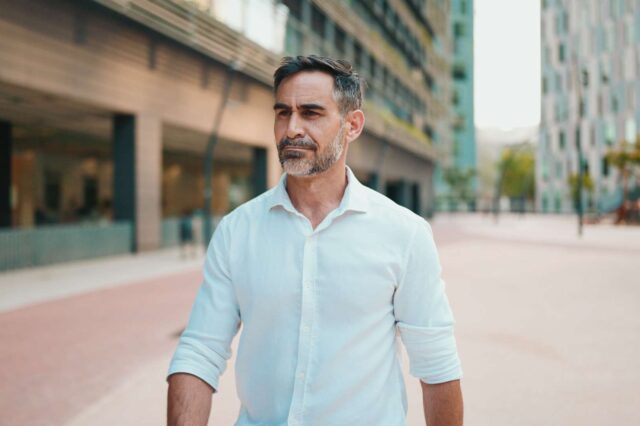Benign Prostatic Hyperplasia: Signs, Symptoms and Treatment
Benign prostatic hyperplasia, or BPH, is the growth of the prostate tissue over time. The growth of this tissue occurs in an area that really impacts our urinary function.

The following information was taken from an audio interview (above) with Joseph Costa, M.D., a urologist with UF Health Jacksonville.
What is benign prostatic hyperplasia?
Benign prostatic hyperplasia, or BPH, is the growth of the prostate tissue over time. The growth of this tissue occurs in an area that really impacts our urinary function.
And so, when we say things like BPH, or benign prostatic disease, what we’re typically speaking of is a prostate that’s grown large enough over time, that it’s compressing the bladder area and the tube we pee through, to the point that it’s really creating a lot of very bothersome symptoms.
What are symptoms of BPH?
Simply having a large prostate doesn’t guarantee you’ll have symptoms, and doesn’t mean you need anything done. But, in many men that have large prostates, the accompanying urinary symptoms — of a poor stream, going frequently, not being able to hold your bladder, and having to find a bathroom at every rest stop, every gas station — it’s like you have to plan your trips out to make sure you’re hitting every stop.
Those are the kinds of things that you might want to see a urologist for and talk to them about your prostate.
What are treatments for BPH?
Remedies and treatments for BPH, or benign prostatic disease, are really exciting. We typically start with medical management, and that has a lot of pluses. It avoids a surgical procedure. The minuses are, it doesn’t always give you the degree of opening of your prostatic channel that you want. And, there are some side effects that may accompany these medications.
Surgically, there are some very minimally invasive interventions, where we place clips within the prostate to hold it open. You come and go the same day of your procedure, and you rarely are left with a catheter for any time at all. So, there’s really good options that exist.
If you’re somebody who’s been on medical therapy, that is really not responding, or not getting traction with these symptoms, we encourage you to reach out to us at UF Health Jacksonville in the urology department, and we’d be happy to get you set up and evaluated.
For more information or to get connected with our urology team, visit UFHealthJax.org/urology or call 904-383-1016 to make an appointment.
About the author
